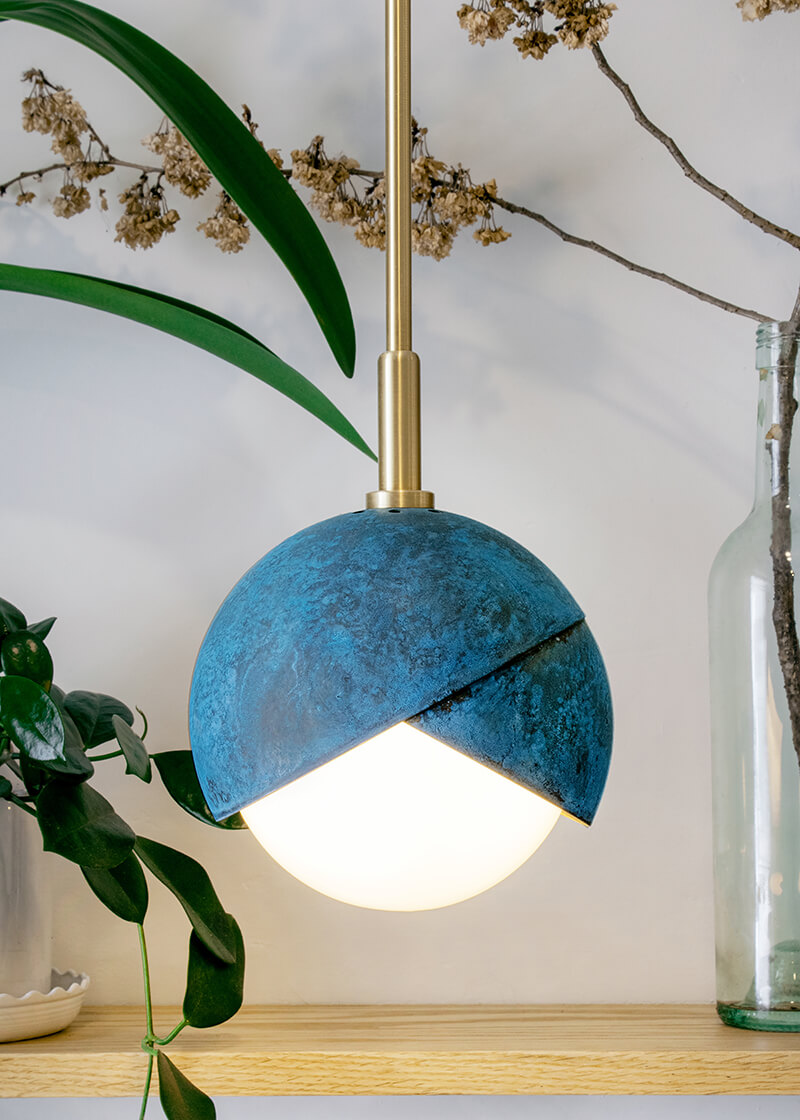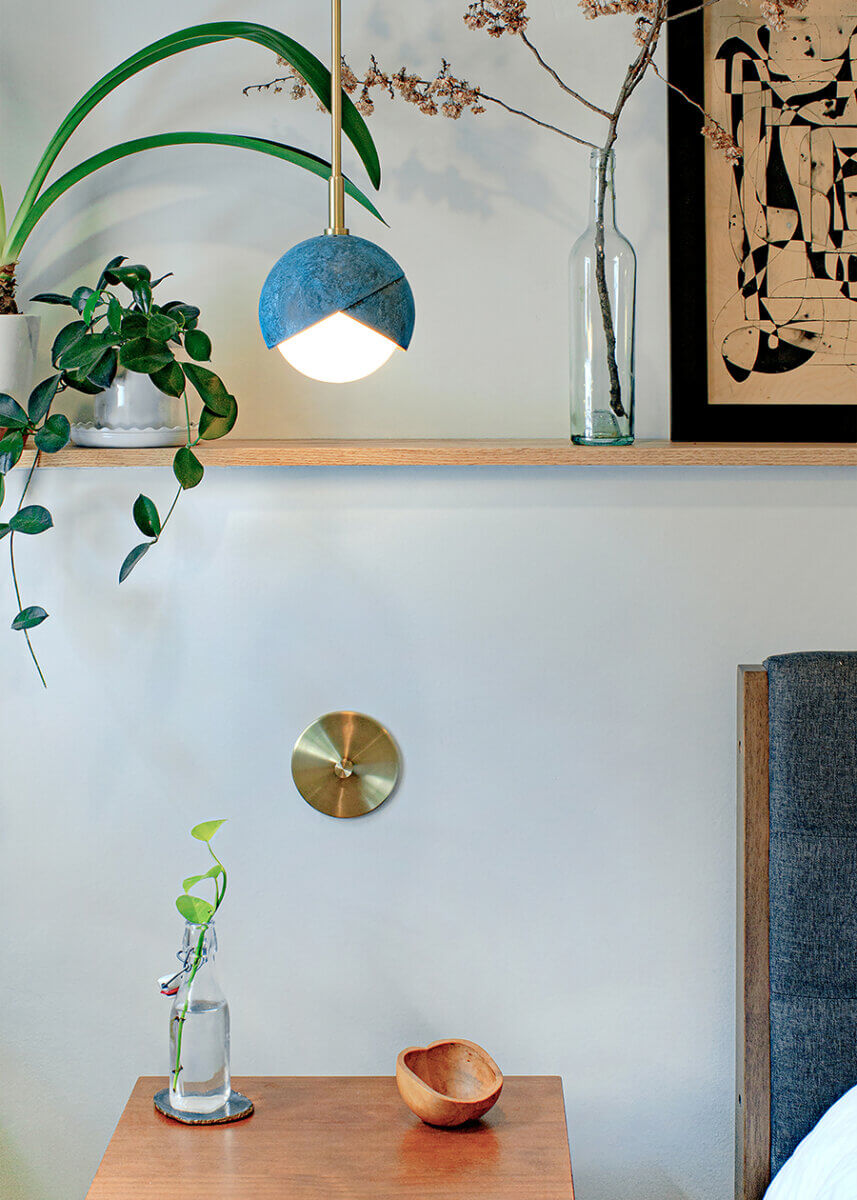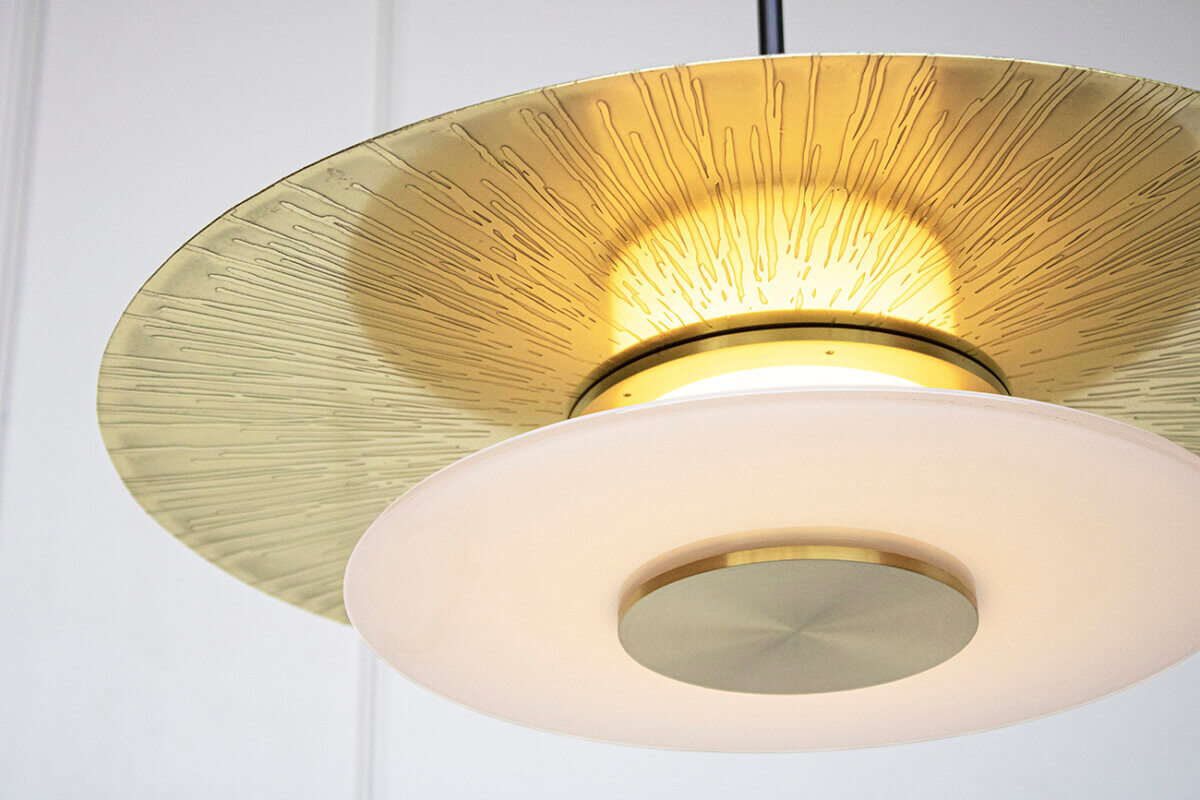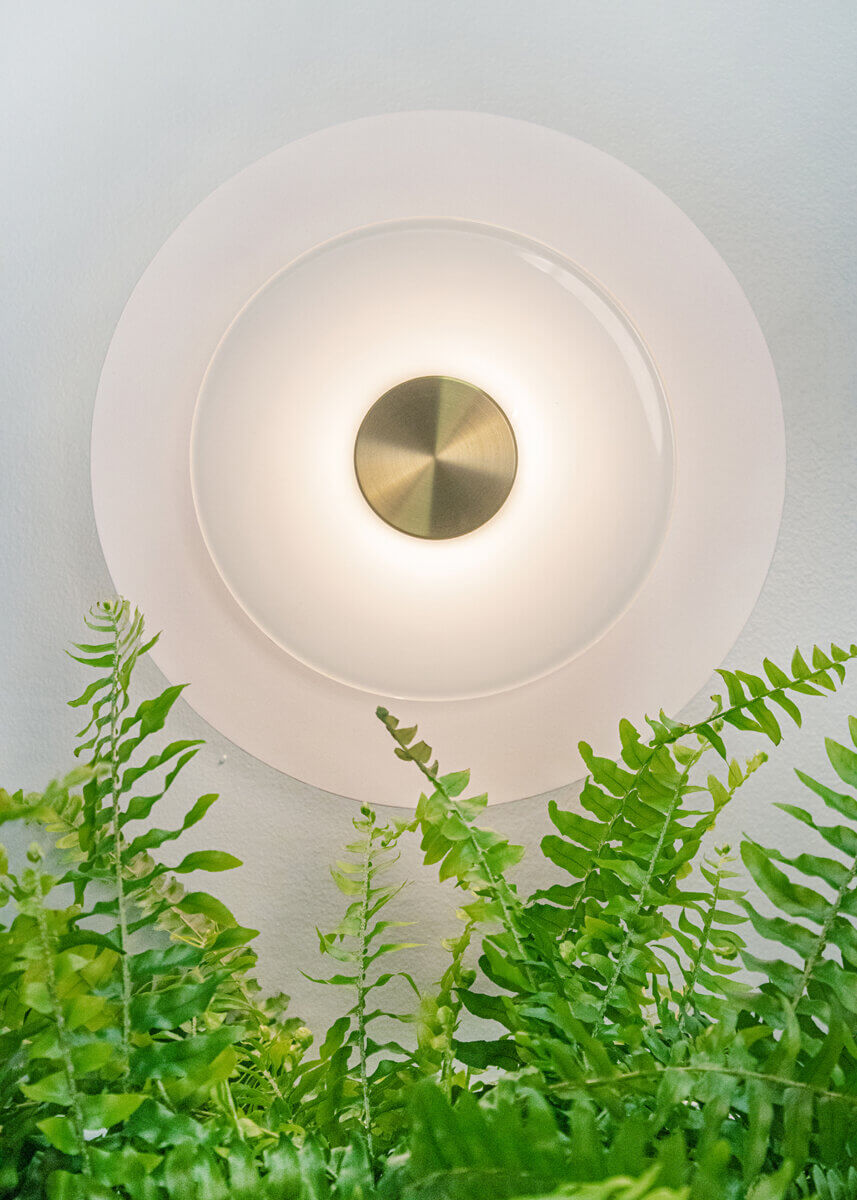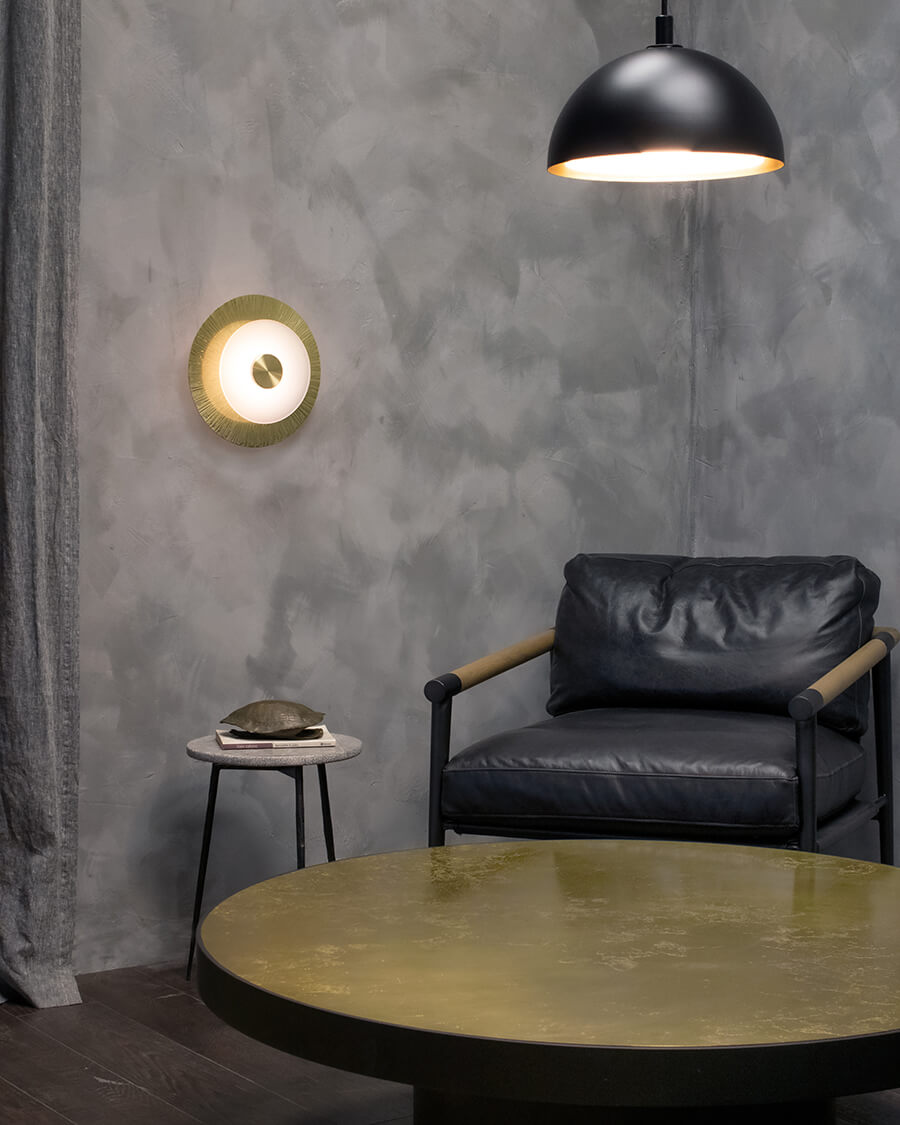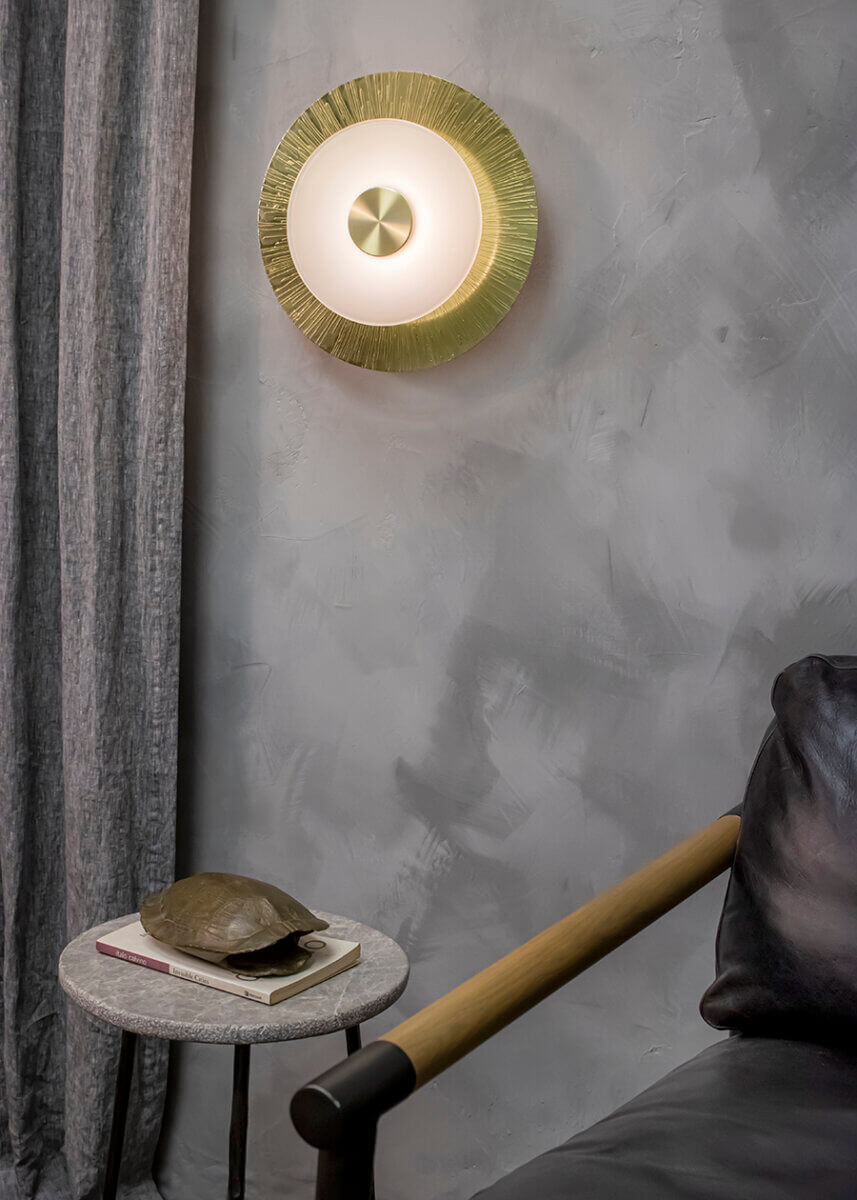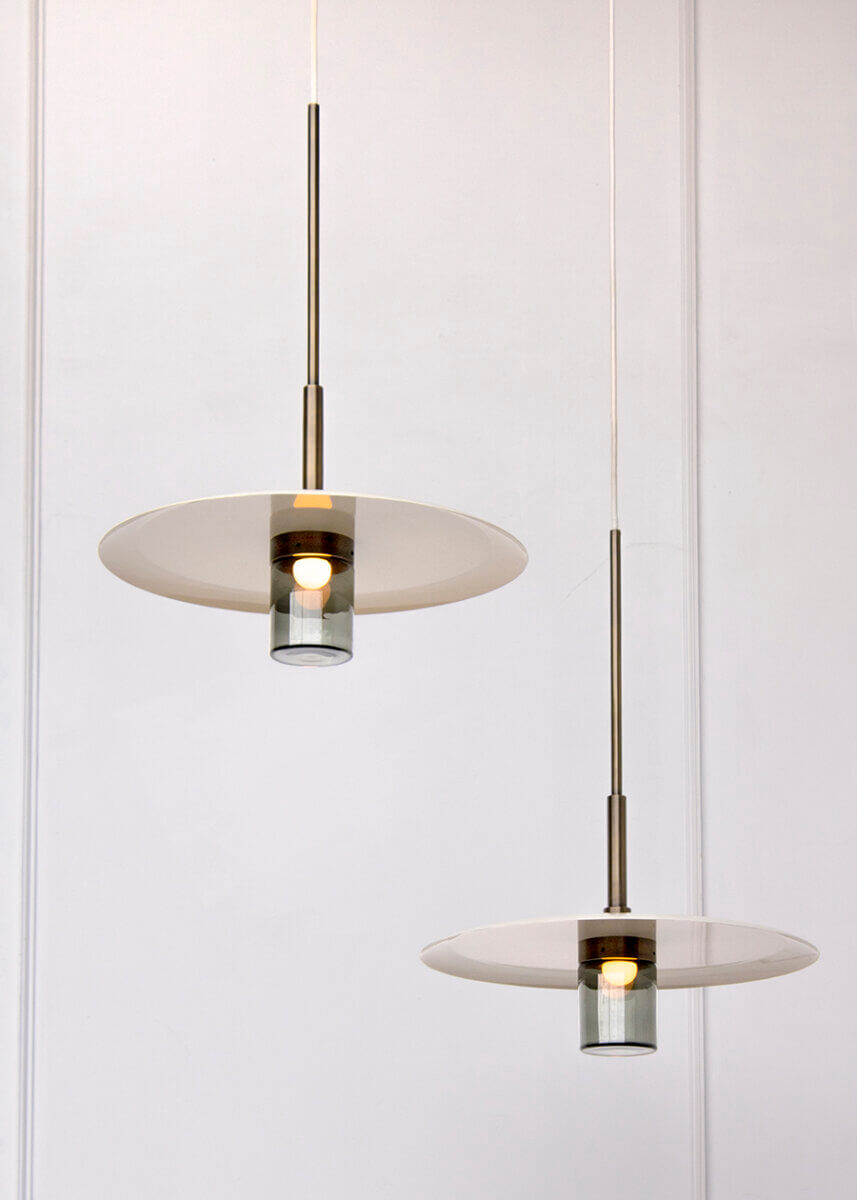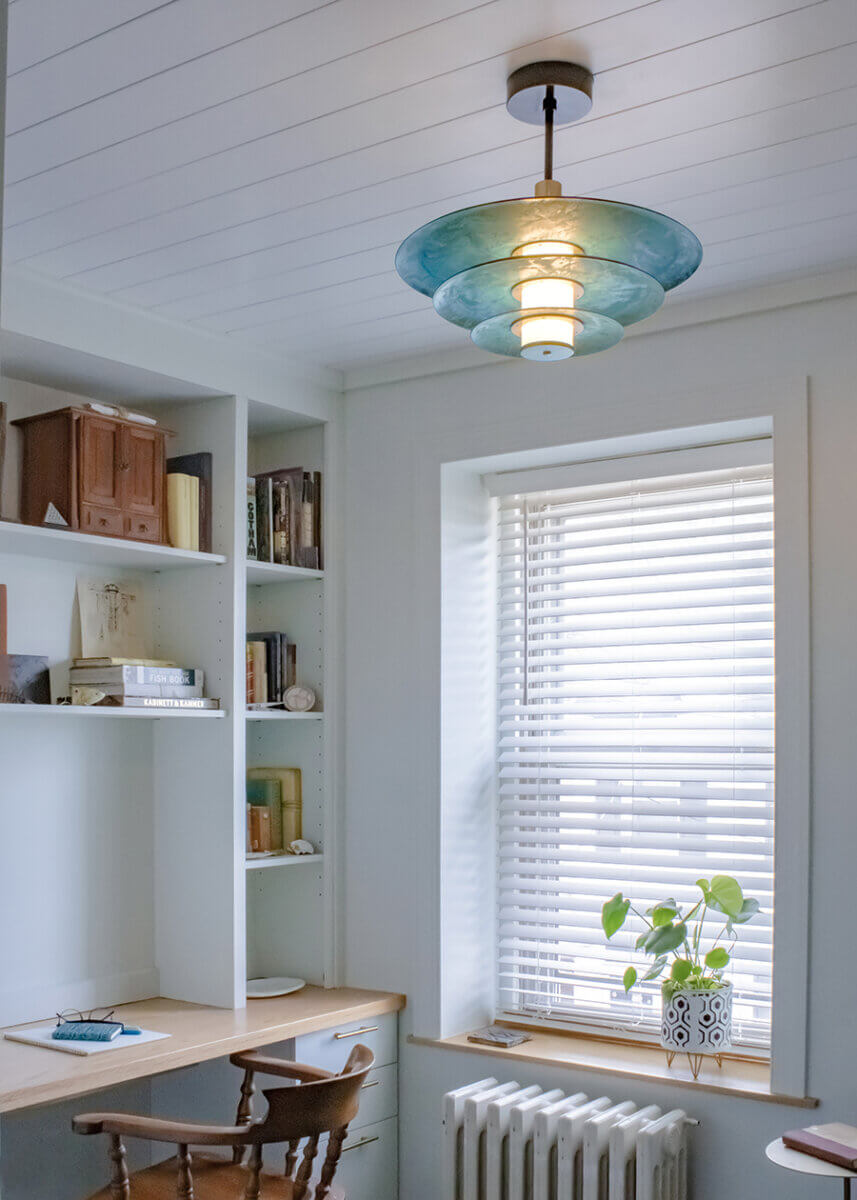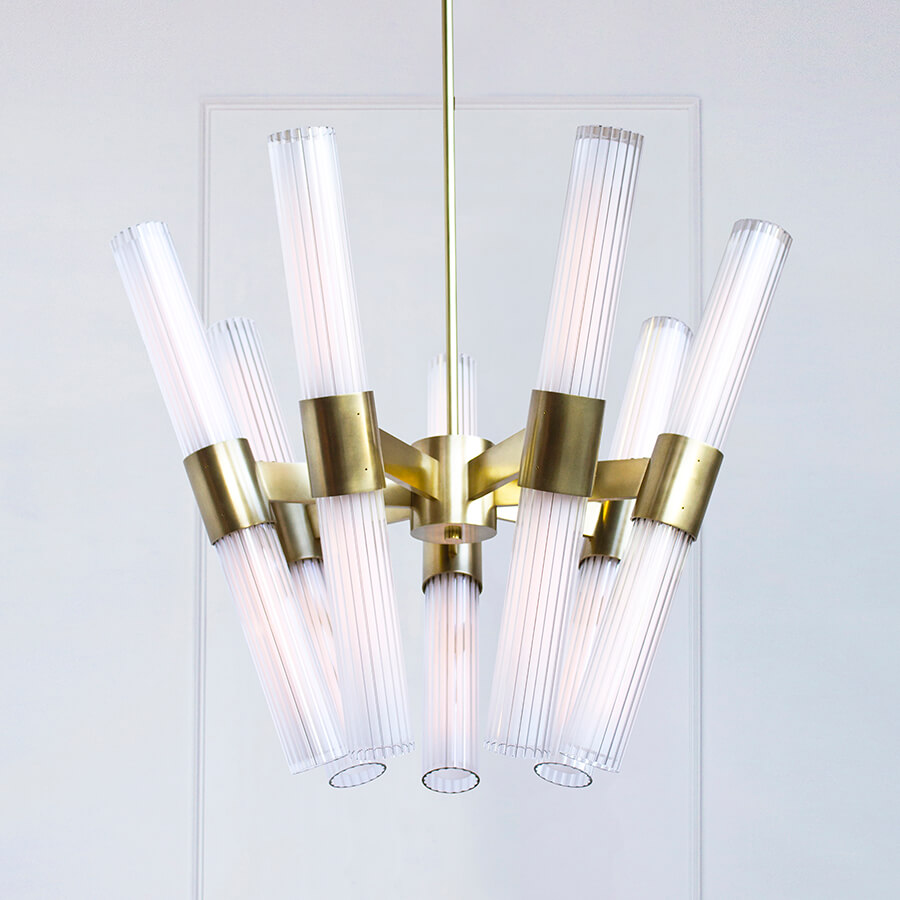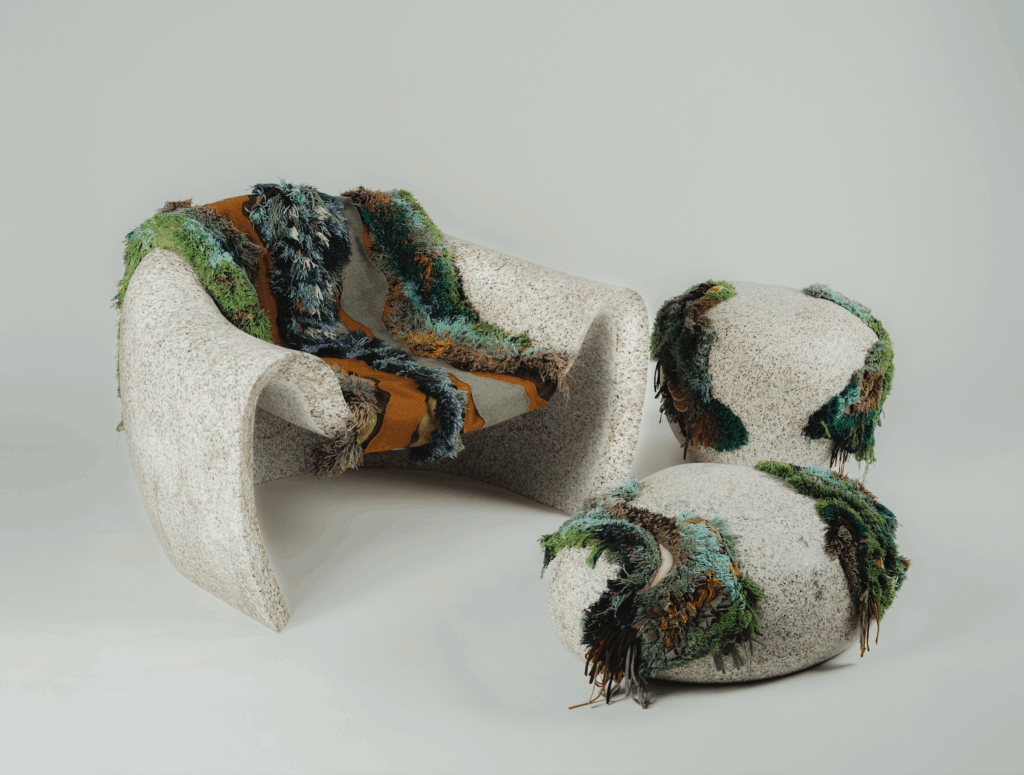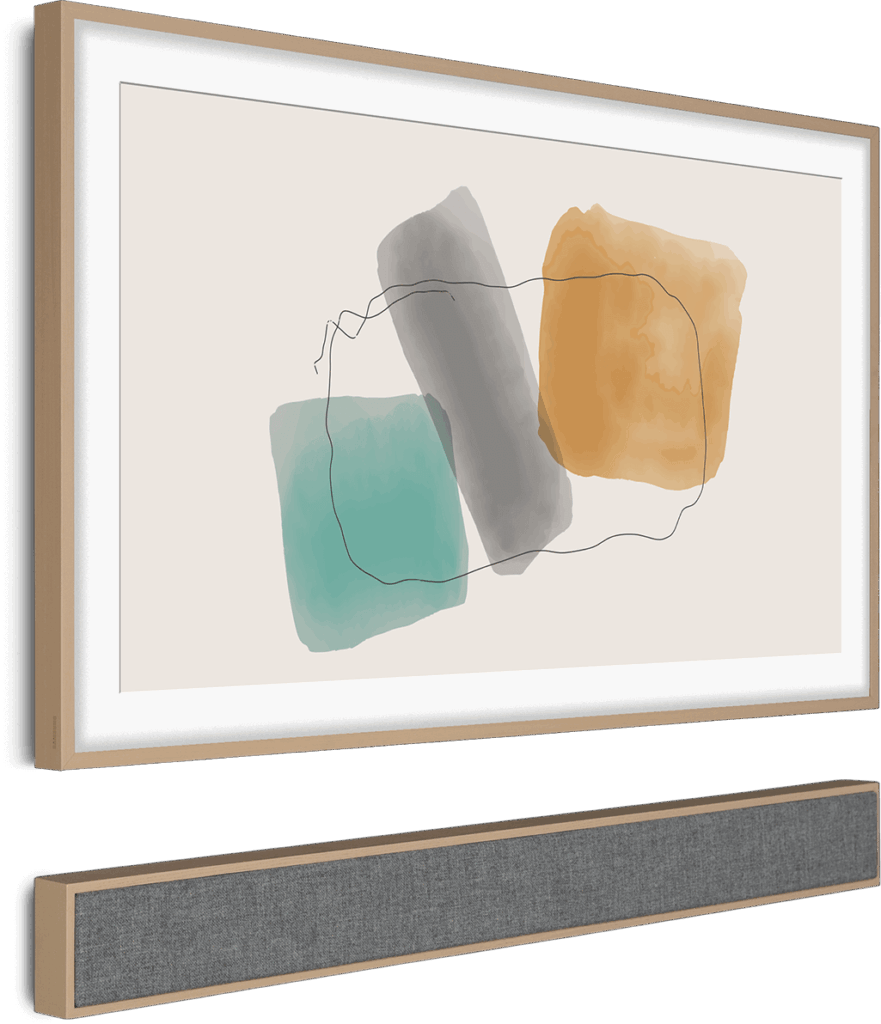
New York City-based design and fabrication studio Trella takes great care in the processes of artisan metalworking. The high end lighting designed by Trella’s co-founders, Timothy Mellema and Daniel Termini, are a celebration of materiality, color, and texture, showcasing a commitment to craft, quality, elegance, and detail.
“Daniel and I had been running a custom design and build studio known as Hangar Design Studios since 2012,” says Daniel. “Through this work, our partnership developed the language and skills necessary to work through creative problems and projects varying widely in scope and scale.”
Through Hangar Design Studios, the duo honed their skills in both design and craft, and by 2017, they realized that with so many ideas of their own, it was time to launch Trella as an outlet for those ideas and practices. Daniel’s background is in architecture, and Timothy’s is in sculpture and jewelry.
“We both still have strong feelings about our respective fields, and we feel lighting when at its best, is at a wonderful crossroad of those two practices,” says Timothy. “We think of the fixtures themselves as suspended illuminating sculptures, and they exist within a context, the interior, a living space which is at the heart of architecture.”
When it comes to Trella’s style, “scale” is everything.
“We want our work to function both from afar, in unison with a designer’s completed project, and additionally as a stand-alone work with multiple levels of details to be appreciated,” says Daniel.
The studio doesn’t believe in superfluous details, but that doesn’t mean every component needs to be limited to its mechanical function. The role each component plays in the visual weight and experience of the finished piece is often a valid function, notes Timothy and Daniel.
“This is a concept we love to play with,” says Timothy. “Brass is used heavily in the production of our work. The versatility of brass, a material which can be widely transformed both in form and surface finish, is what allows us to express all our ideas.”
Any elements of a fixture not produced in house are manufactured by a network of local vendors in the tri state area whom the studio has developed intimate relationships with. An important part of the process is involving relevant vendors in the conversation as early as possible.
“We value their opinions and feel passionate about pushing our craft without swimming against the current of what is possible,” says Daniel.
One of the most important steps in Trella’s design process is play—from use of multiple media, color experiments, 3d printed details, and sometimes reappropriating old physical components to use in new configurations in physical space.
“It is not uncommon for us to assemble a quick mockup of material samples, hang it, and simply live with the results for a few weeks to see what conversation it may spark,” says Timothy. “Once we find a detail we are attracted to, we evaluate its ability to translate to multiple pieces and if this feels promising, we get right on the physical prototyping.”
If one were to visit the Trella workshop, Daniel and Timothy say that you’d find something different depending on the day. On a Monday, the studio might be deep in conversation, reflecting on the many definitions and application of words we hear so often in our industry, words like “authentic”, and what role does this word have in the 21st century?
“Other days in the studio can feel much lighter, a place where statements such as “I like this,” and “I like this a lot,” can seem to satisfy all the criteria for the decisions we make,” says Daniel. “We’d like to think the net outcome of this is, well, something authentic.”
Trella will soon release an expanded line for one of their most popular lights—the Benedict series. In addition to the new fixtures, they are also introducing a whole new palette of color and finish styles to the line. Their new workwill be on display at ICFF 2022.
“We love to chat, so please come on by and say hello!”



